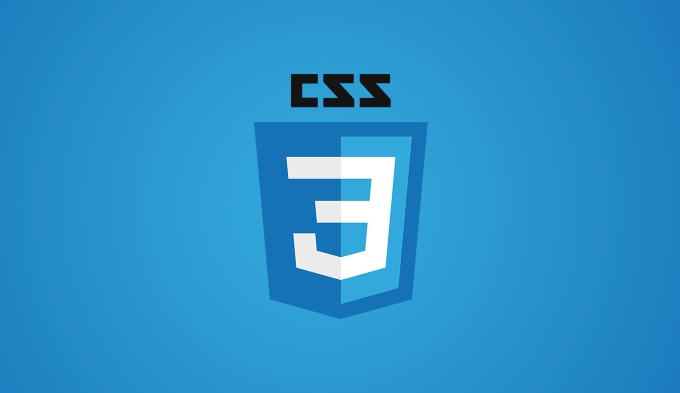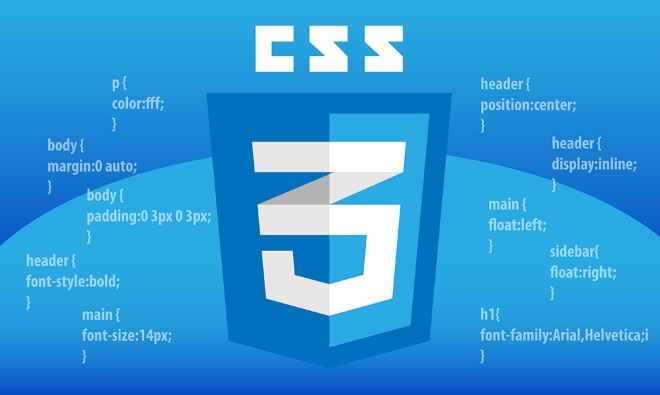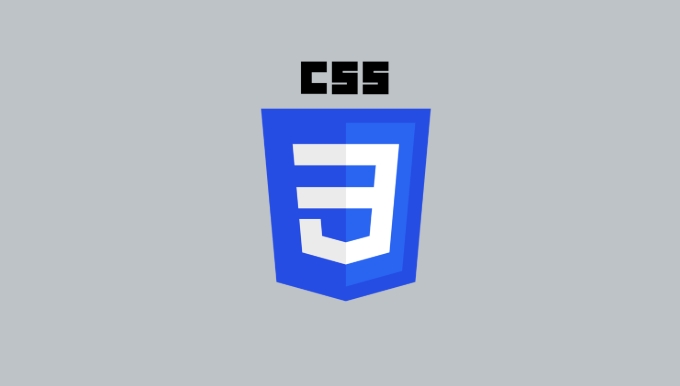Describe the `object-fit` property for images/videos
Jul 29, 2025 am 02:29 AMobject-fit is a CSS property that controls how images or videos scale and align within their containers. 1. fill: stretch and fill the container, which may be deformed; 2. contain: maintain scale scale, display the content in full, and leave blank; 3. cover: maintain scale coverage of the container, which may be cropped; 4. none: maintain the original size, which may be incomplete; 5. scale-down: reduce the proportion, and the effect is similar to containing but not enlarged. When using it, be careful that the container must have a fixed width and height, and avoid setting width:auto or height:auto. Compatibility is good, but in older browsers you can consider background images or JavaScript alternatives. Suitable for responsive design, improving picture layout flexibility.

When you insert pictures or videos into web pages, you often encounter problems with mismatch in size ratios. For example, a container is square, but the picture is horizontal or vertical. object-fit comes in handy at this time - it controls how the picture or video adapts to its container.

What is object-fit ?
object-fit is an attribute in CSS that defines how replacement elements (such as <img src="/static/imghw/default1.png" data-src="https://img.php.cn/upload/article/000/000/000/175372739342769.jpeg" class="lazy" alt="Describe the `object-fit` property for images/videos" > or <video></video> ) are aligned and scaled within their containers. You can understand it as "how to fill the frame without deforming it."
This property is especially suitable for responsive designs, especially when maintaining visual consistency at different screen sizes.

What are the common object-fit values?
There are several commonly used values, and each has different effects:
-
fill: stretching to fill the entire container, regardless of the original proportion, may deform. -
contain: Keep scaled to ensure that the entire picture/video can be displayed and may leave blank space. -
cover: Keep scaled until the container is fully covered, possibly cropping out some of the content. -
none: Keep the original image size, do not scale, and only part of the content may be displayed. -
scale-down: Shrink the image in an equal ratio, the effect is similar tocontain, but the image will not be enlarged.
If you are not sure which one to use, cover and contain are the most commonly used options. The former is suitable for background pictures and avatar displays; the latter is suitable for scenes that require complete display, such as pictures on product details pages.

Things to note in actual use
Although object-fit is convenient, there are several points to note:
- It must be used on containers with specific width and height set, otherwise the effect may not be as expected.
- Different browsers have slightly different support, but modern browsers basically support it.
- If you are using the
<img alt="Describe the `object-fit` property for images/videos" >tag and wantobject-fitto take effect, you cannot setwidth: autoorheight: autoto the image itself, otherwise it will break the proportional adaptation.
For example:
.image-container {
width: 300px;
height: 200px;
overflow: hidden;
}
.image-container img {
width: 100%;
height: 100%;
object-fit: cover;
}This way you can keep the picture filled with the container at all times and keep the proportions without deforming.
Compatibility and Alternatives
Although most modern browsers support object-fit , they are not compatible in some older browsers (such as IE). If you need to support these environments, consider the following:
- Use background image with
background-size: cover/containinstead. - Use JavaScript polyfill to simulate
object-fitbehavior. - Or directly accept the results of the image stretching seen by some users.
For most projects, it is enough to use object-fit directly, especially for websites for mobile users.
Basically that's it. Using object-fit rationally can make your image layout more flexible and avoid the trouble caused by manual drawing trimming.
The above is the detailed content of Describe the `object-fit` property for images/videos. For more information, please follow other related articles on the PHP Chinese website!

Hot AI Tools

Undress AI Tool
Undress images for free

Undresser.AI Undress
AI-powered app for creating realistic nude photos

AI Clothes Remover
Online AI tool for removing clothes from photos.

Clothoff.io
AI clothes remover

Video Face Swap
Swap faces in any video effortlessly with our completely free AI face swap tool!

Hot Article

Hot Tools

Notepad++7.3.1
Easy-to-use and free code editor

SublimeText3 Chinese version
Chinese version, very easy to use

Zend Studio 13.0.1
Powerful PHP integrated development environment

Dreamweaver CS6
Visual web development tools

SublimeText3 Mac version
God-level code editing software (SublimeText3)
 CSS tutorial for creating loading spinners and animations
Jul 07, 2025 am 12:07 AM
CSS tutorial for creating loading spinners and animations
Jul 07, 2025 am 12:07 AM
There are three ways to create a CSS loading rotator: 1. Use the basic rotator of borders to achieve simple animation through HTML and CSS; 2. Use a custom rotator of multiple points to achieve the jump effect through different delay times; 3. Add a rotator in the button and switch classes through JavaScript to display the loading status. Each approach emphasizes the importance of design details such as color, size, accessibility and performance optimization to enhance the user experience.
 Addressing CSS Browser Compatibility issues and prefixes
Jul 07, 2025 am 01:44 AM
Addressing CSS Browser Compatibility issues and prefixes
Jul 07, 2025 am 01:44 AM
To deal with CSS browser compatibility and prefix issues, you need to understand the differences in browser support and use vendor prefixes reasonably. 1. Understand common problems such as Flexbox and Grid support, position:sticky invalid, and animation performance is different; 2. Check CanIuse confirmation feature support status; 3. Correctly use -webkit-, -moz-, -ms-, -o- and other manufacturer prefixes; 4. It is recommended to use Autoprefixer to automatically add prefixes; 5. Install PostCSS and configure browserslist to specify the target browser; 6. Automatically handle compatibility during construction; 7. Modernizr detection features can be used for old projects; 8. No need to pursue consistency of all browsers,
 What is the difference between display: inline, display: block, and display: inline-block?
Jul 11, 2025 am 03:25 AM
What is the difference between display: inline, display: block, and display: inline-block?
Jul 11, 2025 am 03:25 AM
Themaindifferencesbetweendisplay:inline,block,andinline-blockinHTML/CSSarelayoutbehavior,spaceusage,andstylingcontrol.1.Inlineelementsflowwithtext,don’tstartonnewlines,ignorewidth/height,andonlyapplyhorizontalpadding/margins—idealforinlinetextstyling
 Creating custom shapes with css clip-path
Jul 09, 2025 am 01:29 AM
Creating custom shapes with css clip-path
Jul 09, 2025 am 01:29 AM
Use the clip-path attribute of CSS to crop elements into custom shapes, such as triangles, circular notches, polygons, etc., without relying on pictures or SVGs. Its advantages include: 1. Supports a variety of basic shapes such as circle, ellipse, polygon, etc.; 2. Responsive adjustment and adaptable to mobile terminals; 3. Easy to animation, and can be combined with hover or JavaScript to achieve dynamic effects; 4. It does not affect the layout flow, and only crops the display area. Common usages are such as circular clip-path:circle (50pxatcenter) and triangle clip-path:polygon (50%0%, 100 0%, 0 0%). Notice
 Styling visited links differently with CSS
Jul 11, 2025 am 03:26 AM
Styling visited links differently with CSS
Jul 11, 2025 am 03:26 AM
Setting the style of links you have visited can improve the user experience, especially in content-intensive websites to help users navigate better. 1. Use CSS's: visited pseudo-class to define the style of the visited link, such as color changes; 2. Note that the browser only allows modification of some attributes due to privacy restrictions; 3. The color selection should be coordinated with the overall style to avoid abruptness; 4. The mobile terminal may not display this effect, and it is recommended to combine it with other visual prompts such as icon auxiliary logos.
 How to create responsive images using CSS?
Jul 15, 2025 am 01:10 AM
How to create responsive images using CSS?
Jul 15, 2025 am 01:10 AM
To create responsive images using CSS, it can be mainly achieved through the following methods: 1. Use max-width:100% and height:auto to allow the image to adapt to the container width while maintaining the proportion; 2. Use HTML's srcset and sizes attributes to intelligently load the image sources adapted to different screens; 3. Use object-fit and object-position to control image cropping and focus display. Together, these methods ensure that the images are presented clearly and beautifully on different devices.
 What are common CSS browser inconsistencies?
Jul 26, 2025 am 07:04 AM
What are common CSS browser inconsistencies?
Jul 26, 2025 am 07:04 AM
Different browsers have differences in CSS parsing, resulting in inconsistent display effects, mainly including the default style difference, box model calculation method, Flexbox and Grid layout support level, and inconsistent behavior of certain CSS attributes. 1. The default style processing is inconsistent. The solution is to use CSSReset or Normalize.css to unify the initial style; 2. The box model calculation method of the old version of IE is different. It is recommended to use box-sizing:border-box in a unified manner; 3. Flexbox and Grid perform differently in edge cases or in old versions. More tests and use Autoprefixer; 4. Some CSS attribute behaviors are inconsistent. CanIuse must be consulted and downgraded.
 Demystifying CSS Units: px, em, rem, vw, vh comparisons
Jul 08, 2025 am 02:16 AM
Demystifying CSS Units: px, em, rem, vw, vh comparisons
Jul 08, 2025 am 02:16 AM
The choice of CSS units depends on design requirements and responsive requirements. 1.px is used for fixed size, suitable for precise control but lack of elasticity; 2.em is a relative unit, which is easily caused by the influence of the parent element, while rem is more stable based on the root element and is suitable for global scaling; 3.vw/vh is based on the viewport size, suitable for responsive design, but attention should be paid to the performance under extreme screens; 4. When choosing, it should be determined based on whether responsive adjustments, element hierarchy relationships and viewport dependence. Reasonable use can improve layout flexibility and maintenance.






